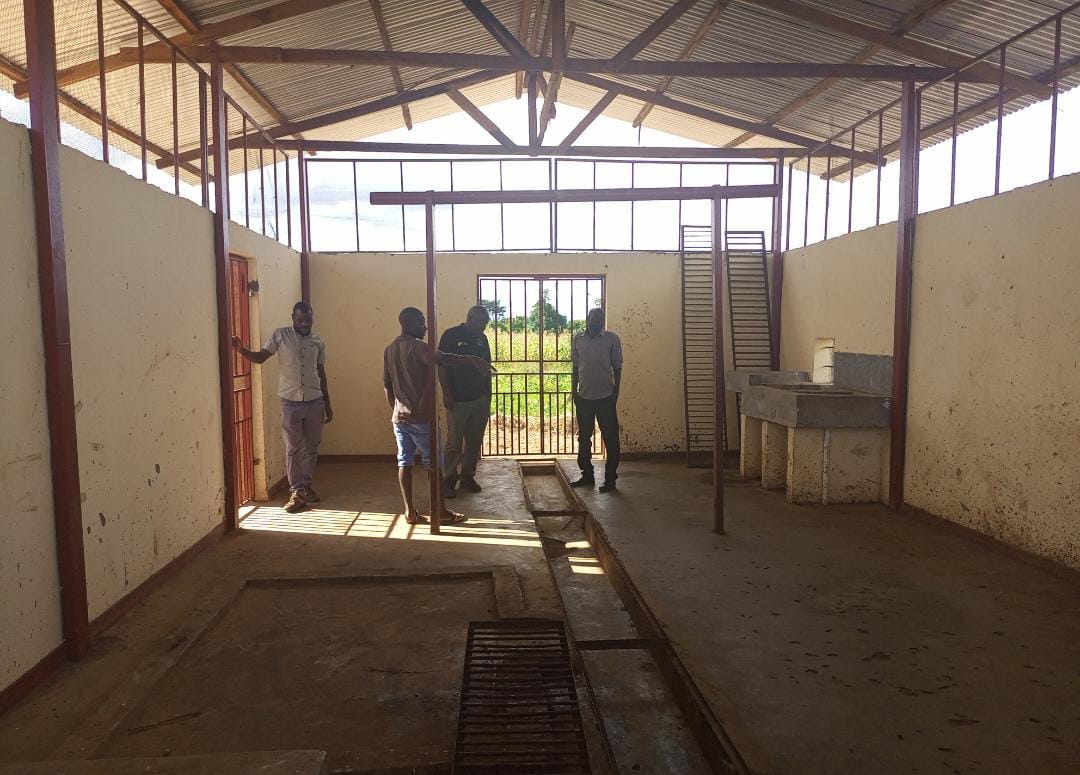Communities in Euthini, Mpherembe Tout Construction of Slaughter Slabs for Improved Access to Hygienic Meat
Communities in Euthini and Mpherembe in Mzimba, Malawi have praised the construction of slaughter slabs for improving access to quality and hygienic meat at the two centres, writes Victor Musongole.
MZIMBA, Malawi - Communities around Euthini and Mpherembe in Mzimba, Malawi have praised the construction of slaughter slabs for improving access to quality and hygienic meat at the two centres, writes Victor Musongole.
In the past, butchery operators used to slaughter their livestock in nearby bushy and sandy areas, which compromised the quality of the meat.
Additionally, it was difficult for veterinary officials to certify the meat since it was being slaughtered in their absence.
To address this issue, the Center for Community Empowerment Initiative (CCEI), with funding from Veterinarians Frontiers from the Netherlands and the Edgar and Cooper Foundation, constructed slaughterhouses at Euthini and Mpherembe trading centres early last year so that butchery operators can slaughter their animals in safe and clean environments.
Isaac Jumbo, a regular meat customer at Mpherembe, expressed his confidence in the new facilities.
"We used to buy meat mixed with non-meat materials like grass and sand, but since the arrival of these slabs last year, I can say as customers we are buying quality, healthy meat," Jumbo said.
"It's our plea that they will soon improve the selling area also, by among other things providing cold rooms where they can keep the meat for sale the next day."
Simon Moyo, who is in charge of the slaughter space at Euthini, expressed his gratitude for the employment opportunities that the construction of the slaughterhouses has provided.
"Thanks to CCEI for constructing the slaughter spaces in our area, I personally have benefited because I have been employed," said Moyo.
"I now have a source of income to help me look after my family, while the community is able to access quality meat that is being slaughtered in clean spaces."
The Executive Director for CCEI, Gilbert Banda, said the idea of constructing slaughterhouses came after observing that most livestock was being slaughtered in unclean environments, which also put the lives of consumers at risk.
"Veterinary officers were reluctant to conduct inspections of the meat because the slaughtering places were unsafe. This led to contamination of the meat most of the time," disclosed Banda.
Makayiko Honde, Secretary for the Mpherembe Butchermen Association, said the construction of slaughterhouses at Mpherembe gives confidence to customers because animals are slaughtered in a clean and safe place, unlike in the past, where they used to slaughter animals in bushes.
Martin Gondwe, Agricultural Extension Development Coordinator for Mpherembe Extension Planning Area (EPA), said the construction of slaughterhouses will improve and promote meat hygiene in the area.
"In the past, they (butcher men) were slaughtering their animals in unhealthy places, but now the situation has improved. Dogs and other animals cannot access the place as it used to be in the past," Gondwe said.
Area Veterinary Supervisor for Euthini and Mbalachanda Extension Planning Area (EPA), Mabvuto Chabinga, said the construction of slaughter spaces will help them to easily provide their services.
Besides the construction of the slaughterhouses, CCEI is also implementing other initiatives targeting livestock farmers, such as providing artificial insemination and extension services to promote the quality of livestock in the area.



